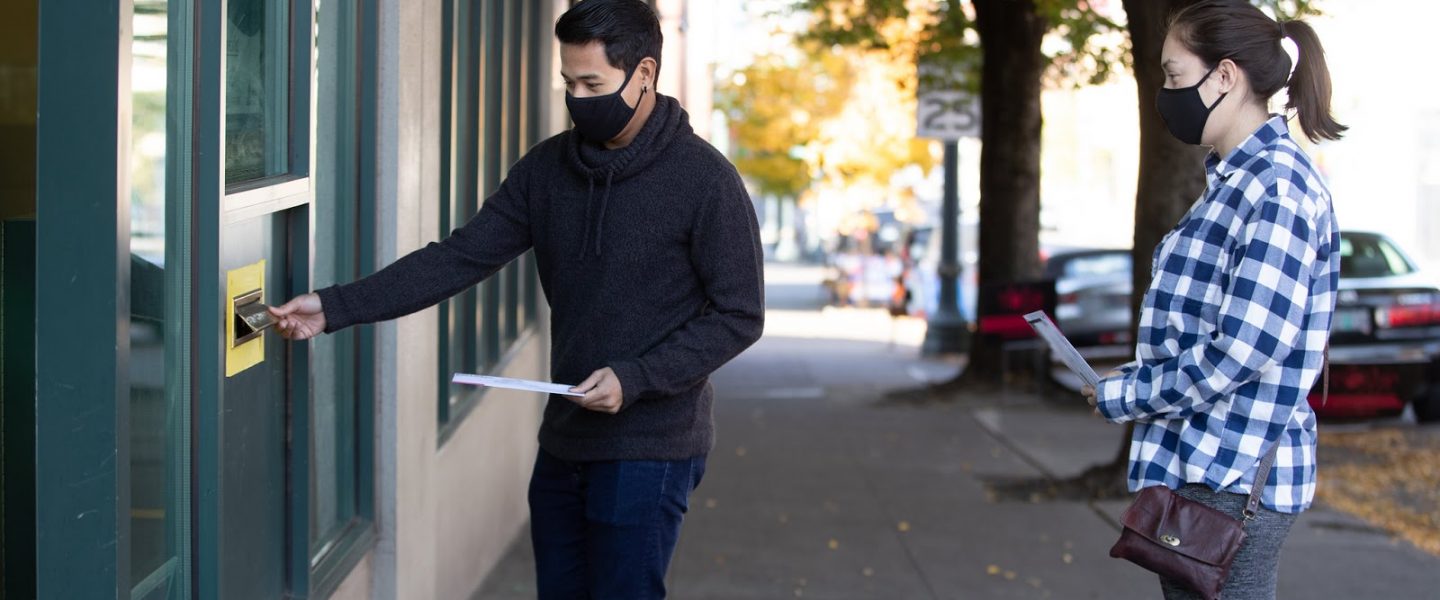Students are voting, but they say they wish they were more informed.
Young people have the power to shape electoral outcomes, but do they use it? A WhoWhatWhy analysis of 76 US colleges and universities finds no school surpassed a 68 percent voter turnout rate in the 2016 general election. First-time younger voters have traditionally turned up at the polls at lower rates than older adults.
One common misconception about young voters is that they are politically disengaged and disinterested in the issues facing their country. These narratives overlook the pressing social and material barriers to voting faced by youth nationwide, such as inaccessible voter education, finding transportation to off-campus polls, and missing class to cast a ballot.
WhoWhatWhy Student Voter Survey
A WhoWhatWhy survey of 76 schools reveals the attitudes and perceptions of students towards on-campus civic engagement.
Eighty-nine percent of students surveyed said they planned to vote in the 2020 general election. Likely due to the pandemic’s uncertainty, nearly half of these students reported participating in early voting options.
[visualizer id=”56680″]
Given the prominent role that colleges and universities play in young people’s lives, institutionalized electoral recognition and encouragement are crucial for creating and maintaining voter habits.
[visualizer id=”56682″]
Overall, students reported that their schools provide resources and information on navigating the voting process, including registering to vote, locating polling stations, and campus and statewide voter policies. Among students who used on-campus polling options in the past, many said voting took between 15 minutes and an hour. These findings are encouraging as they demonstrate that schools are taking the appropriate actions to facilitate voter engagement.
[visualizer id=”56699″]
[visualizer id=”56703″]
Despite reports of strong electoral communication, student voters say they are uninformed about these voter policies. Most reported not knowing whether their schools’ polls were open for several days ahead of the general election. Students were also unsure whether an ID was required to vote and if the signature on the ID needed to exactly match their registration application. This uncertainty was clear among attendees of the University of California system, which is surprising since the state does not require voters to present an ID when voting.
[visualizer id=”56686″]
[visualizer id=”56690″]
Since states lack uniformity in voter ID laws and whether university-issued IDs satisfy requirements, students who are poorly informed about state voting procedures risk not voting, or not having their vote counted, either by making mistakes during the process or becoming confused and discouraged. When insufficient voter education pairs with partisan voter ID laws aimed at stifling the vote, youth turnout suffers.
[visualizer id=”56694″]
Brianna Gates, a campus organizer for the Wisconsin Student Public Interest Research Group, said differences in voter ID laws, polling hours, and election website quality and accessibility between states depressed the youth vote. In the days before the election, their focus remained on phone banking, and supporting citizens in their transition from a “confused potential voter to a proud ballot caster.”
COVID-19: Voter Education and Changing Electoral Rules
The uniqueness of the 2020 general election, fueled by both the pandemic and the Trump administration’s opposition to mail-in voting, exacerbated threats to the student vote.
Gates expressed concerns about voter education regarding the US Supreme Court’s ruling that the state of Wisconsin cannot count absentee votes received after November 3.
“The ruling came down with only one day’s notice before the last day to mail in your ballot and still have it received by election day, barring any delays in the mail, which have been seen around the country. Without our information campaign, many people may have sent off their absentee ballots having no idea their vote would be voided if their ballot arrived after the end of day on November 3,” she said.
With the Power and Reach to Educate and Mobilize Student Voters, US Colleges and Universities Must Become Role Models
Therefore, it is not apathy preventing youth from turning their preferences into electoral outcomes but a lack of voter education and civic support. Youth political engagement has risen since 2016, with 83 percent of young people reportedly believing they have the power to change the country.
It is projected that once all votes are counted, youth turnout might reach a historic 53-56 percent. The Student PIRGs New Voters Project played an outsized role in mobilizing new voters in the weeks leading up to the election. Out of 1 million interactions, more than 390,000 involved personally contacting youth and helping them create a voter plan.
The institutional frameworks necessary for voting exist within US colleges and universities. They include educational mentors and resources, communication channels, and social networks. To help create a generation of democratically engaged citizens, schools must focus on inducing youth to vote and supporting them along the way.
Related front page panorama photo credit: Adapted by WhoWhatWhy from Anthony Crider / Flickr (CC BY 2.0).



